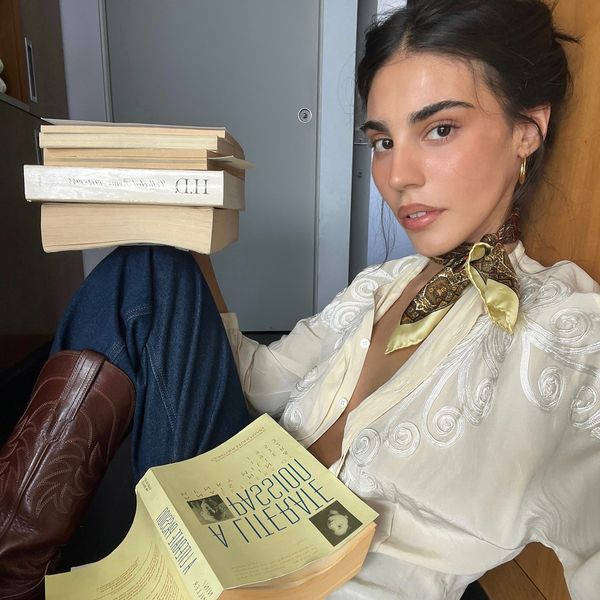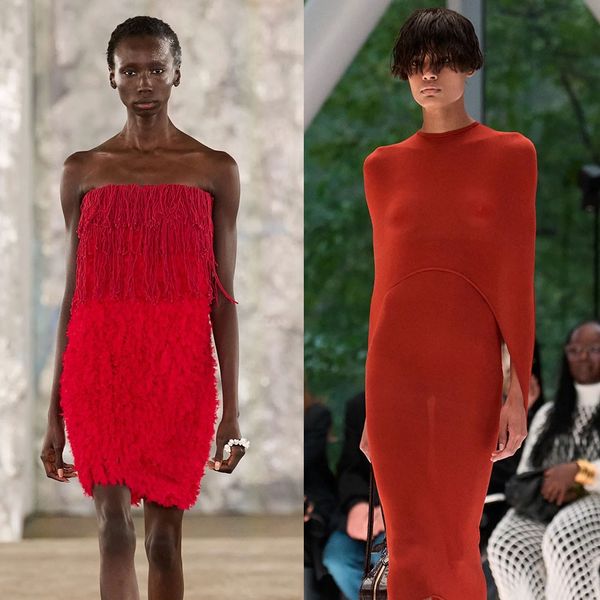For Caroline Zimbalist, A "Mistake" Is Just A New Project
The artist turned designer making garments and vessels out of bioplastics.
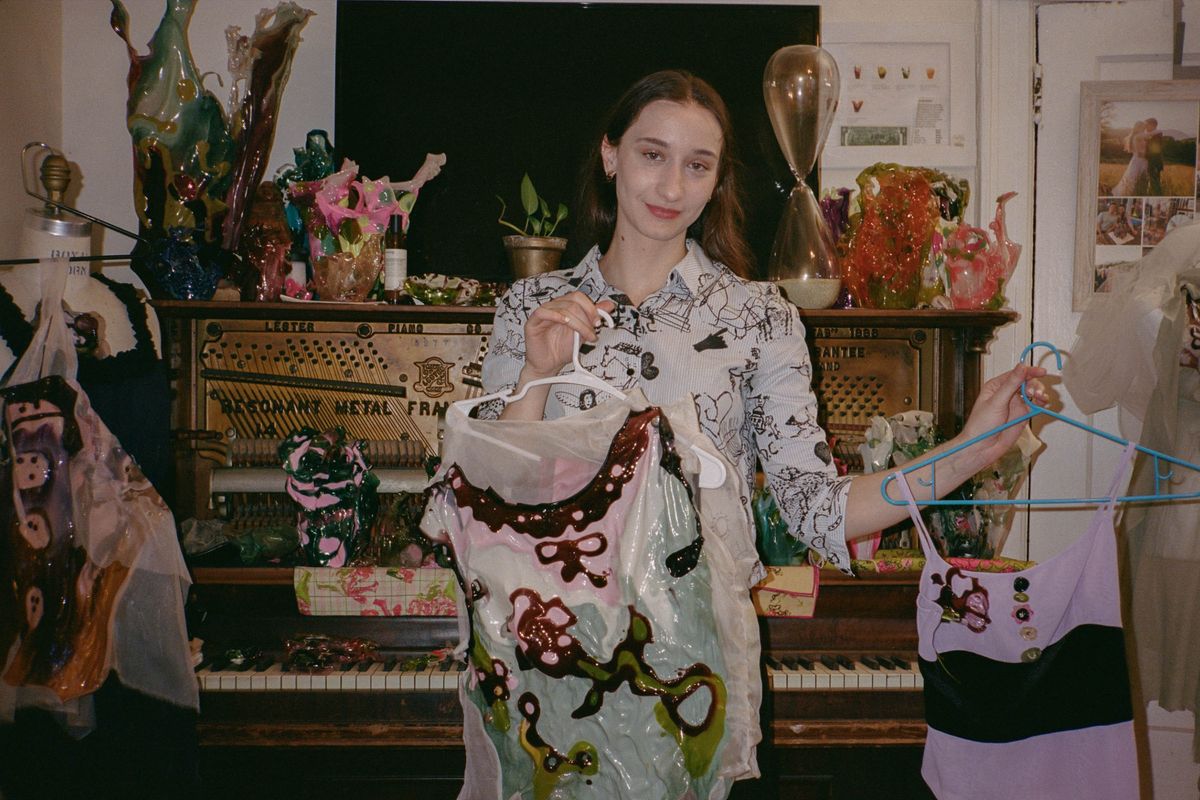
In One of One, Coveteur spotlights unique, interesting people carving a niche for themselves in the world—their hyper-specific passions, backgrounds, dreams, and inner lives.
I first met Caroline Zimbalist at her Spring/Summer 2026 presentation during New York Fashion Week at which models gently floated through the bright textile showroom in the Flatiron District while creating abstract gestural drawings on tiny sheets of paper. I had, at that point, through Coveteur articles and bringing her up in any and all remotely relevant moments, made it clear that I was big fan of hers. In a true New York City often feeling like a small town manner, Zimbalist caught wind of this and I had the opportunity to meet her face-to-face.
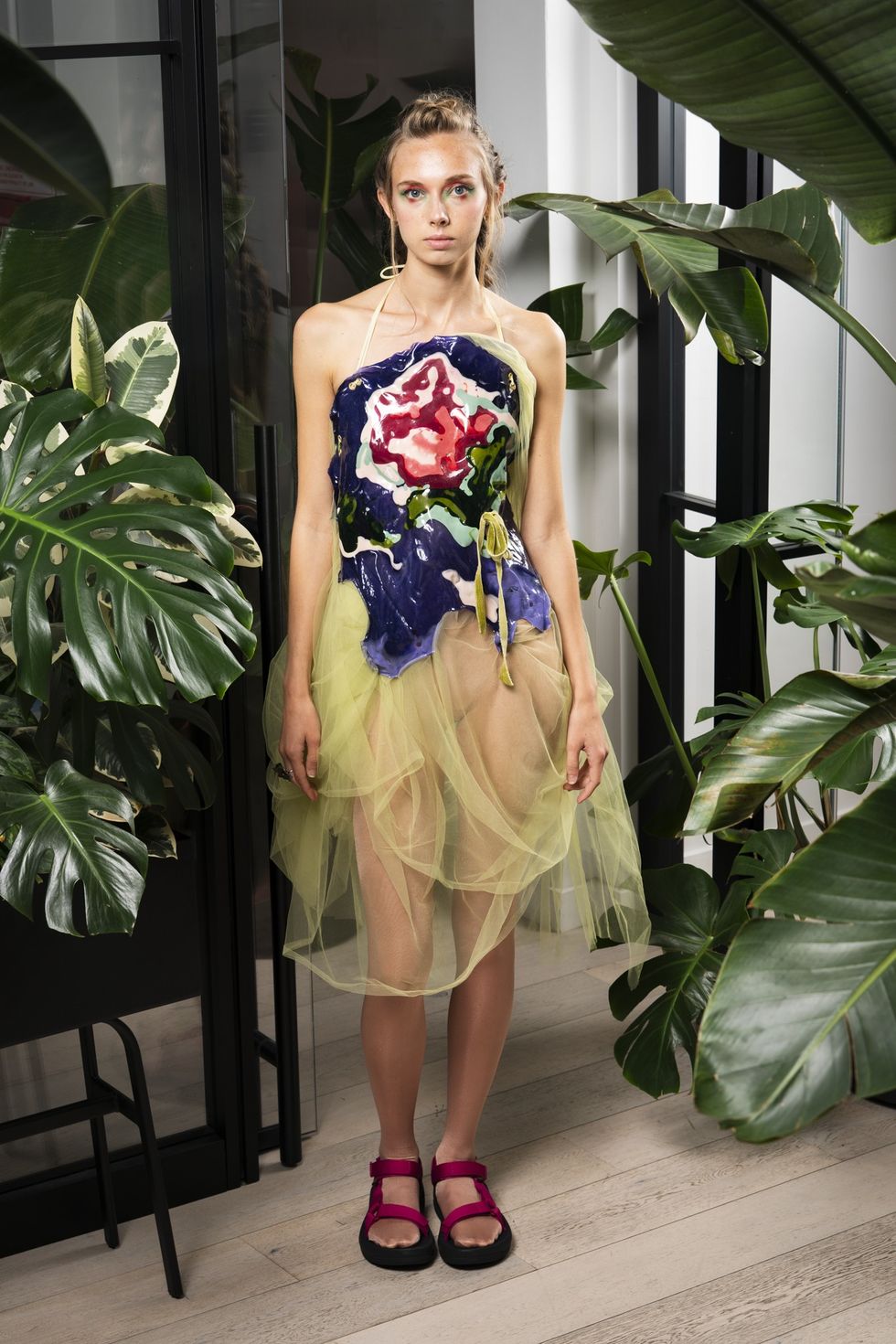
Lindsey Media

Lindsey Media
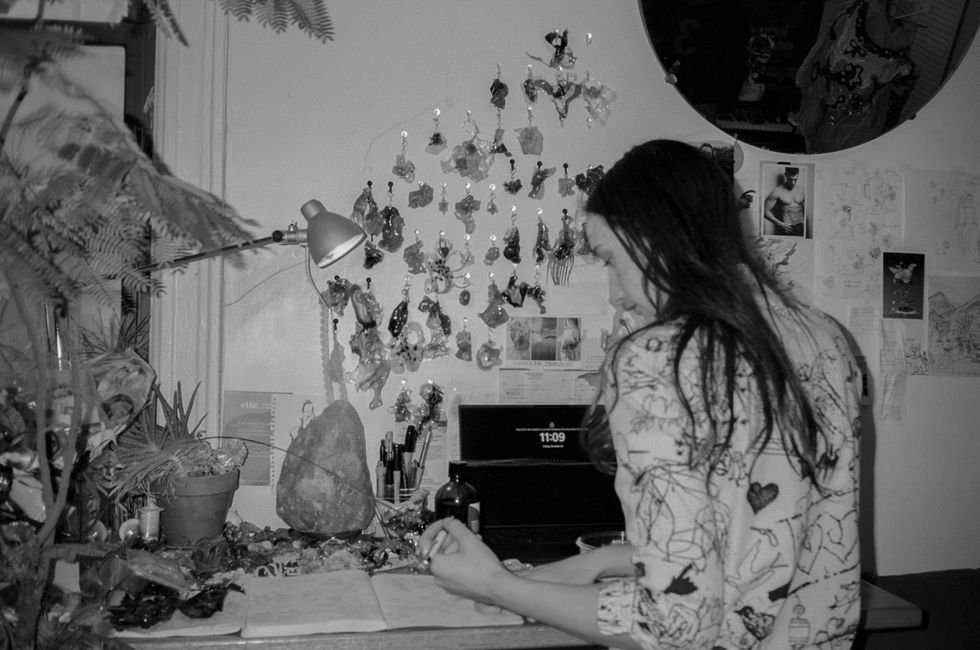
Ella O'Keeffe
I met Caroline Zimbalist for the second time on her Long Island City block. We met outside for the sake of her hyper-protective German shepherd, Monti, becoming acclimated to us before we intruded on his territory. We bonded over having "bad" dogs with pure intentions, Monti sensed that we were decent enough people, and then we were welcomed into their home.
We quickly learned that Zimbalist's wearable museum-worthy art is all made from the comfort of her cozy Long Island City apartment in the same Cuisinart pot that she's been using for years. "This pot has made everything," she said. And there was something about the non-primary colored vessels and accessories decorating her living space (notably all along her piano) and the garments showcased during fashion week all coming from the same place that immediately felt cool and special. On a portable single burner stove, she began showing us how she creates bioplastics and transforms them into art.
"So these are small little bioplastic scraps," she said, pointing towards a wall of keychains and earrings that formed a watercolor painting of sorts. "They're scraps because, originally they were bigger vessels and the vessels sort of rip when they're drying when they get too heavy, and the pieces that fall off turn into these organic little shapes."
Zimbalist has been exploring how to turn scraps into functional pieces, how to allow nothing to go to waste. She has always been resourceful: making collages, being fascinated with mixed media art, and spending a lot of time outside collecting rocks, shells, and living things from the age of three or four. She explained that the bioplastic she uses is made out of pea powder, while other artists choose to use shrimp shells or seaweed powders. She adds a bit of lemon oil to mask the smell and perks up when the water comes closer to a boil, still clearly deeply fascinated and excited by the process.
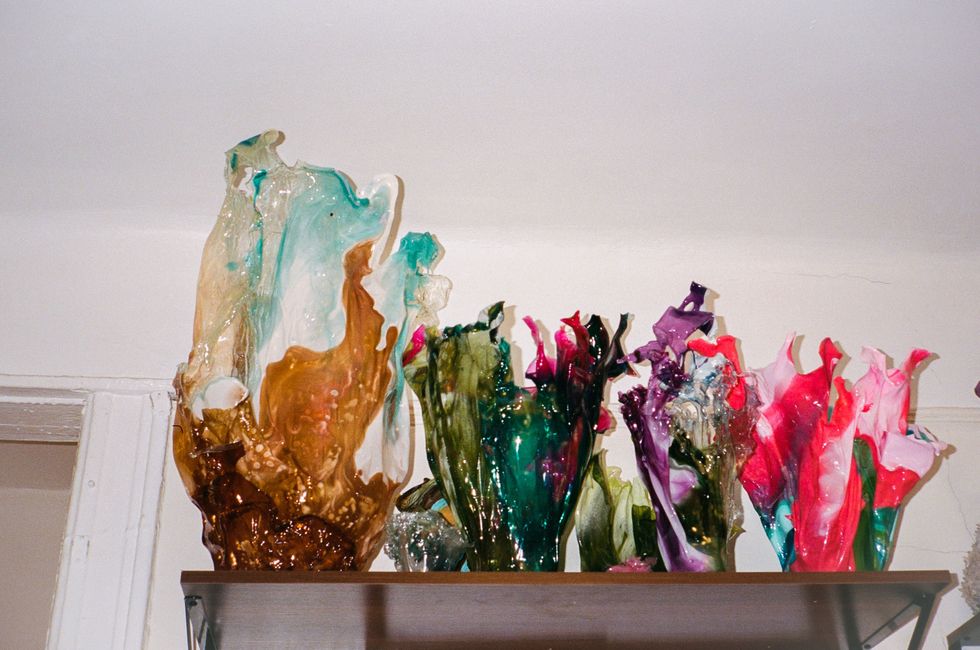
Ella O'Keeffe
Zimbalist attended Parsons and focused on fashion, but never thought of herself as just one type of artist. "I always had in the back of my head: do I want to be an illustrator? Do I want to do something in print design? A lot of material focus surface design." Now, she is arguably all of the above: fashion designer, illustrator, print designer and, arguably, sculptor. "I was doing a lot of painting on canvas and just draping the canvas and stuff like that. I also worked with a lot of silicone, and that's highly toxic. I actually got very sick. I almost got silicone poisoning while working with it in a small room like this. And it's kind of crazy, they never really tell you how dangerous it is, but it's super, super dangerous. So I was like, wow, I can't ever work with something like that again." This led her to think about what she could work with that was both natural and customizable and that thought, in turn, led her to bioplastics.
She adds the bioplastic mixture into the pot of water and begins stirring until it thickens a bit. Now she starts thinking about color, perhaps the most prominent and distinct element of her designs. She uses everything from textile dye, alcohol ink, and Mica powder to create a full color spectrum. She plays with both transparency and opacity. "Bioplastic is always going to kind of warp and everything, so nothing's going to be a perfect flat mold. It could look perfect here, but then the minute you peel it out and it's free from the mold, you can twist it and manipulate it," she said. "You can get really creative. I mean, in the past, people have sprinkled things in. It gets a little bit crafty in that way. In the fashion world, I have embedded different hardware into the mixture. So you could literally add this button and then believe it or not, when it cools, that will become a functional button that you could sew through."
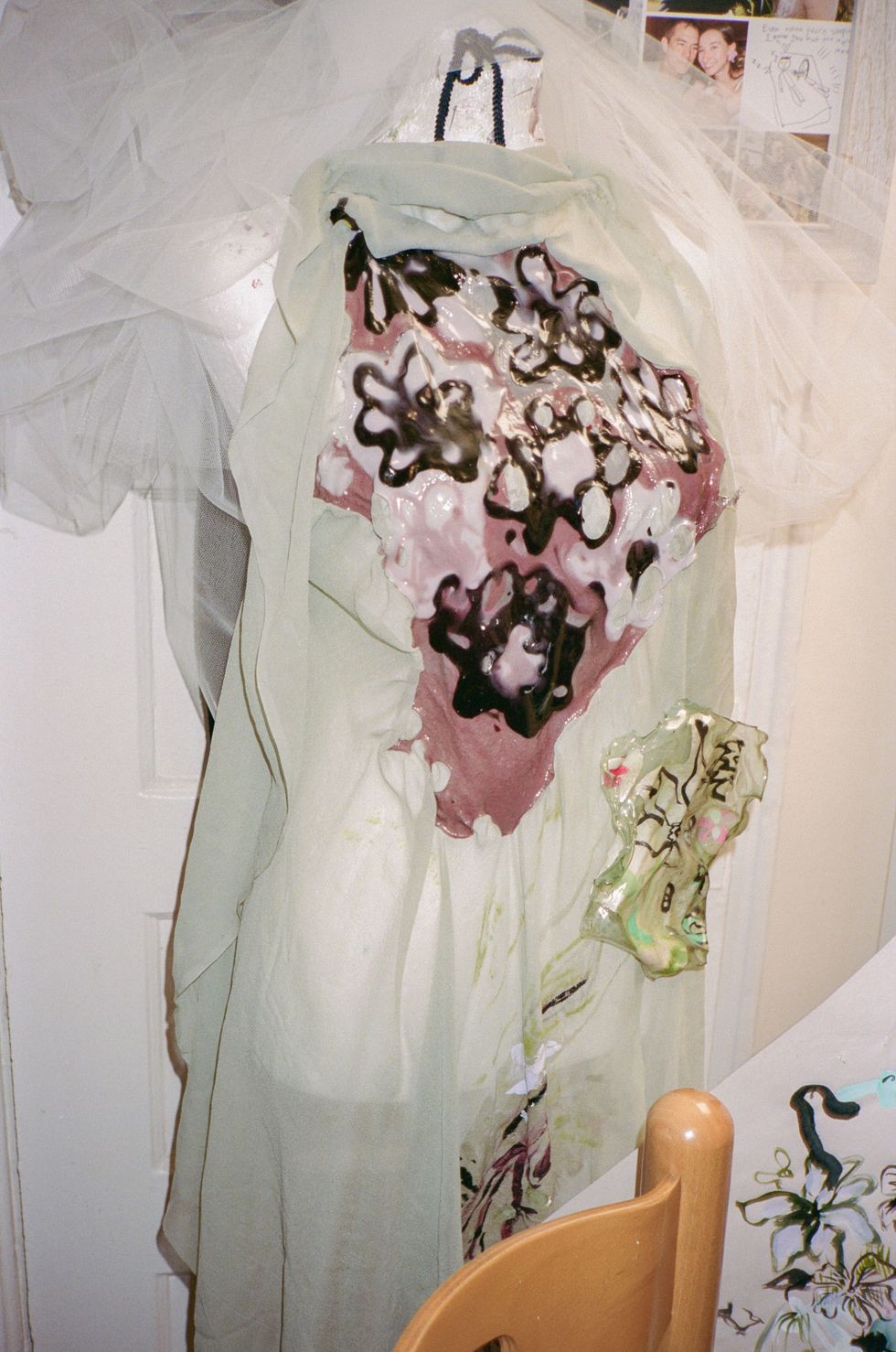
Ella O'Keeffe
 Ella O'Keeffe
Ella O'KeeffeWhile there are pre made molds available to create smaller items, there are of course no molds for full wearable garments. "I'm typically deciding the color palette, getting a large sheet, something non-stick, and quite literally free pouring the mixture onto the ground," she explained. "It's a much more extensive process and also very timely. The colors have to dry and then they start running. Ultimately it's the same process, but large."

Ella O'Keeffe
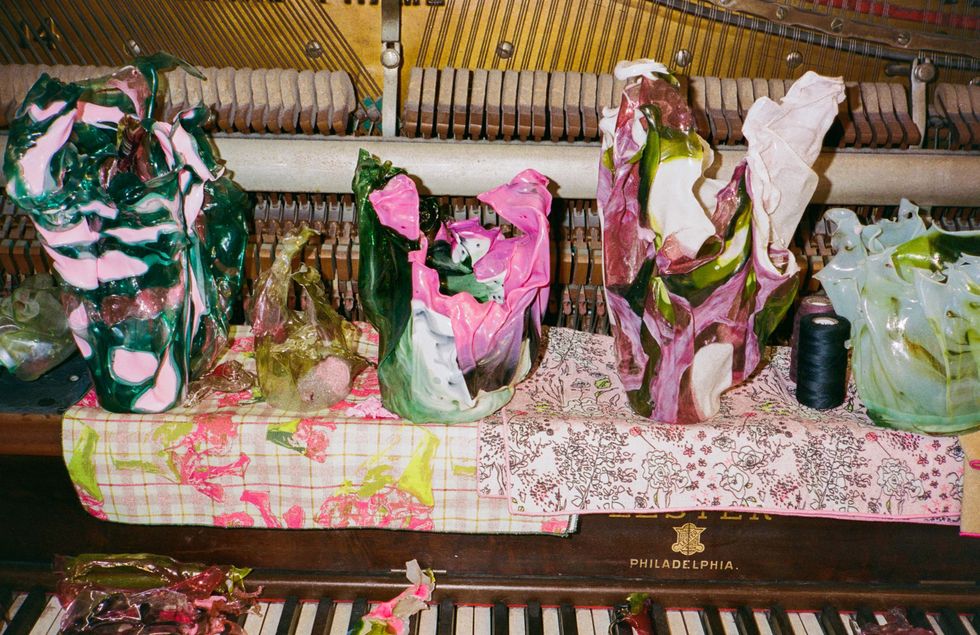
Ella O'Keeffe
These are things that Caroline Zimbalist is inspired by: food plating, antique trinkets, novelty items, and the environment, and this is how she never runs out of ideas: she just keeps trying new things. Everything she creates serves as inspiration for her next project and so on and so forth. She describes her work as whimsical, amorphous, illustrative, and feminine, and she describes herself as an artist turned designer. She has seemingly mastered the 3D and now the 2D with an upcoming linens collection with ABC Carpet & Home.
In the work that she does, there isn't really any room for error. Once the bioplastic materials dries it's fixed, but error is sort of part of the fun. I, as someone who finds comfort in the option to write and edit and rewrite, naturally I wondered if making her art ever feels scary. "Yes and no. I go in with a color in mind, but there's a lot of trial and error and failed attempts. But every failed attempt, I'll kind of recut it and repurpose it into something else. But yeah, it is chaotic. I'm working with a liquid and it's dripping on the ground, and most of the time it's the final fabric/form." Her response, in a nutshell, is that she has no fear and that every mistake is a new, exciting project. It's that lack of fear, the mindset that there are no such things as errors in art, and trust in her creative instincts to fully go for it despite the pressure of timeliness that results in work (wearable art) that I was so excited to fan-girl over the first time I met her.

